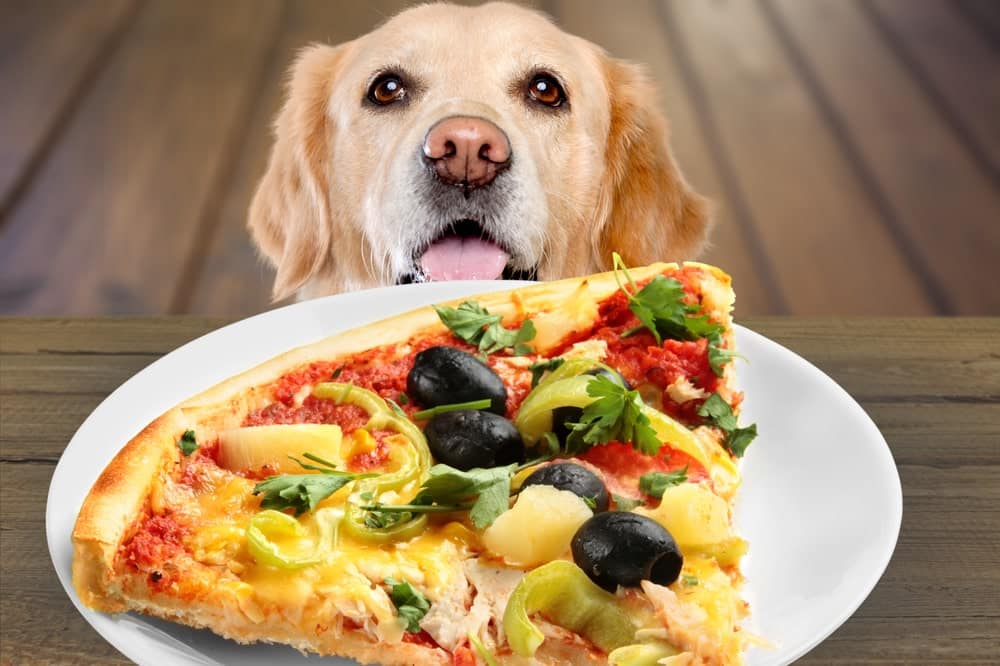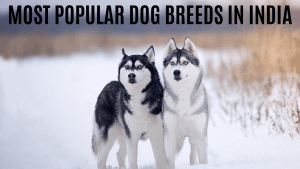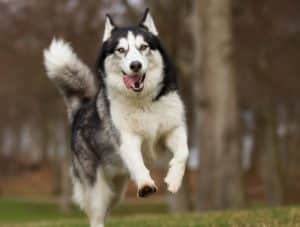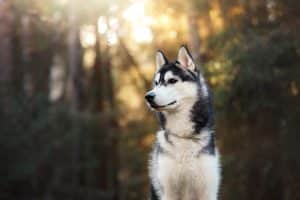Dog owners have to be always responsible for the well-being of their pets. Apart from playing with them, they also have to take care of their diet.
A Guide to Proper Dog Nutrition
Taking care of a dog involves much more than playtime and affection. Responsible owners need to be mindful of their pet’s diet to ensure their well-being. Here’s a breakdown of crucial factors in determining how much food to feed your dog:
Key Factors Influencing Your Dog’s Diet
- Age: Puppies, adult dogs, and seniors have different nutritional needs.
- Breed: Some breeds are prone to specific health issues that may call for adjusted diets.
- Size & Weight: Portion sizes must be tailored to your dog’s size and ideal weight.
- Activity Level: Energetic dogs will need more calories than couch potatoes.
- Health Conditions: Work with your vet to manage any medical concerns with a specialized diet.
Dietary Needs: What To Feed Your Dog
- Protein: A vital building block for healthy dogs, typically from meat sources.
- Healthy Fats: Provide energy and support a healthy coat.
- Carbohydrates: Source of energy, but balance is important to avoid weight gain.
- Vitamins & Minerals: Essential for various bodily functions and overall health.
- Water: Always have fresh, clean water available.
Choosing the Right Food
- Consult Your Vet: Get personalized recommendations based on your dog’s specific needs.
- Check Ingredient Lists: Prioritize quality protein sources and avoid artificial additives.
- Age-Appropriate Formulas: Ensure the food matches your dog’s life stage.
- Consider Allergies: Talk to your vet about identifying and managing food sensitivities.
Homemade vs. Commercial Dog Food
- Homemade: Offers complete control over ingredients but requires careful research and may not provide the full balance of nutrients.
- Commercial: Convenient, with a variety of options, but quality can vary greatly. Look for reputable brands that follow nutritional guidelines.
Additional Considerations
- Treats: Should be given in moderation and factored into your dog’s overall calorie intake. Opt for healthy options like fruits and vegetables.
- Feeding Schedule: Consistent mealtimes aid digestion and prevent overeating.
- Obesity Prevention: Watch portion sizes and provide adequate exercise to maintain healthy weight.
Key Takeaways
- A balanced diet is crucial for your dog’s health and longevity.
- Work with your veterinarian to create a feeding plan tailored to your dog’s individual needs.
- Be mindful of portion sizes and choose high-quality food options.
- Limit treats and table scraps to avoid unnecessary calories.
- Regular exercise alongside a good diet is essential for overall well-being.
Remember: A healthy, happy dog starts with proper nutrition!
How Much Food To Feed My Dog ?
Most adult dogs require to eat at least two times a day. They should be well hydrated throughout the day. Initially, if you are unsure about the food, dog brand foods are the best options as they have guidelines and information printed on their packs.
Choosing your dog food becomes easier once you know about their lifestyle.
So, you need to know if your pet dog is an enthusiastic one who loves exercise or a sluggish dog who loves to laze around. Of course, many factors make up for a dog’s diet plan. But a pet is to be fed up to a maximum of 3 meals a day.
Conditions Affecting Dog Feeding Habits
Eating habits are not only influenced by physical factors but also by environmental ones. For example, if your dog’s food is insufficient, they may suffer from deficiencies, and overfeeding may lead to obesity.
Hence decide their meal size based on the following factors.
- Physical factors – Bodyweight, breeds, age, and gender
- Physiological factors – Pregnancy and lactation, and seniority
- Activity Level – Amount of exercise
- Environmental Factors – Temperature, humidity, and terrain
- Medical Cause – Food allergies and sensitivities
Foods That Can Be a Part of Your Dogs’ Diet
The first thing to consider is that human foods should not be a part of your pet’s diet. Pet dogs are mainly carnivorous. Therefore, they require basic nutrients like water, proteins, fats, carbohydrates, minerals, and vitamins.
So, your dog’s diet can include the following.
- Plant-based food – These food items are filled with healthy proteins that help maintain blood protein levels. This type of diet also helps mineral digestibility in dogs.
- Dairy products – Dairy items can be given to your dog in small quantities as too much milk or cheese may result in digestive problems.
- Fish – Salmon and tuna are healthy for dogs as they are rich in Omega-3 fatty acids and help promote blood circulation.
- Bananas – Bananas are to be eaten in moderation as they increase magnesium levels. It supports bone health.
- Cucumbers – Cucumbers form an excellent snack for overweight dogs. They are loaded with vitamins and minerals.
You can seek professional help from any dog care center to get details of store-bought food that needs to be given to your dog.
How Much Chicken and Rice to Feed a Dog?
A dog suffering from an upset tummy is to be fed a bland diet of chicken and rice. Chicken and rice are not nutrient-rich food to give a healthy dog as it is devoid of vitamins and minerals. However, the chicken fed to a sick dog should be boneless.
But the question is how much your dog should be fed with chicken and rice. Ensure the meal’s proportion is one-third chicken with two-thirds of a rice bowl.
Why Does Feeding Your Dog with an Appropriate Food Matter?
Providing your dog with proper nutritious food is sure to take care of his well-being. However, before deciding on the intake of their pets, owners need to consider their health status. According to the standard dog feeding chart, their food should have vitamins, minerals, and fiber in proper proportion.
If the balance of the food gets mismatched, it can lead to many health problems. Taking care of its dietary needs ensures that your dog gets enough nutrients to keep them active. An all-meat diet is unsuitable for dogs as they do not cover up their nourishment.
Should You Give Wet Dog Food or Dry Dog Food to Your Pet?
Both wet and dry food is good for pet dogs if fed in proper portions. Anyway, pet owners need to have an opinion from the vet about this diet.
Wet dog food is a mixture of protein sources plus meat in the form of gravy. This gravy contains vitamins, minerals, and grains. In addition, its high-water content makes it favorable, as it helps keep your spaniel hydrated.
Dry dog food is similar to dry food. However, dry food called kibble has a dough-like consistency instead of a moist gravy. This kibble is dried and sprayed with the necessary vitamins, minerals, fats, and oils.
Homemade Food vs. Commercial Food for Dogs
There is no certainty that home-cooked food is better for your terrier or other dog breeds than store-bought food. In addition, since dogs have different digestive systems and may have varied nutritional requirements, homemade meals may not always be able to match those needs.
Commercial food has more shell life than home-cooked ones. However, store-bought food of various brands does not guarantee high-quality food for your pet.
Processed canned food lose their nutrients when packed and may contain unhealthy fats. For home-cooked meals, you need to invest lots of your time to find the proper balance in the foods.
What Kind of Treats Should You Give to Your Dog to Eat?
Treats should not form a significant part of the food offered to your pet dog. Treats can act as incentives and be withheld from obese pets.
They should form only 5-10% of their daily diet and, in case you have to give them more, make sure you offer it in small quantities. In the end, it all comes down to counting calories.
So, instead of store-bought artificial treats, try giving them natural ones like apples, carrots, green beans, watermelon, and broccoli that may give them the much-needed kick and nourishment.
Dog Feeding Chart: What Kind of Feeding Schedule Works for Dogs
Do you wonder how often to feed your dog? Well, feeding your dog at all times is not advisable as it can lead to obesity and illness. Instead, owners need to prepare a schedule for their dogs.
The food schedule works around their activities and sleep times. You need to set a routine for the pet dog as it creates a good habit.
Dogs should be given healthy food in the mornings and evenings. Feeding them before any strenuous activity may lead to bloating and stomach pain. Bigger dogs may need more food than small dogs. It is better to provide your dog with the same meal to get used to it.
How to Choose Food for Your Pet Dog?
The best way to choose food for your pet is by little experimentation. The food you choose for your pets might have the right mix of everything. Unfortunately, many commercial products in the market have made choosing quality over other factors difficult.
- Do little research on the food to be given to your pet over the internet or consult with the vet.
- Experiment with limited ingredients.
- Switch food as per their age and weight. For example, opt for puppy food to feed younger dogs and adult dog food for your grown-up dog.
- Check for food allergies.
- Reserve treats for occasions.
- The best way to choose the best food for your dog is to converse with the vet or any center dog care unit.
Common Mistakes that Owners Often Make While Selecting Food
When deciding on the food for the pet dog, many newbie owners tend to make some common mistakes. Some of them are stated below.
- Check for a classy ingredient list rather than look into the nutrients’ value.
- Get attracted to glossy marketing and ignore the authentic information on the label.
- Do not take into consideration the dog’s age and weight.
- Do not perform thorough research on the food type.
- Do not store the food in proper containers.
Foods to Keep Away from Your Pets
Pets at home are free around the house and may consume any eatables that might be interesting. However, not all foods are considered suitable for dogs. Often owners cannot resist giving their dogs food as rewards that will do more harm than good for their pet.
So, the foods that must be kept away are as follows.
- Candy, toothpaste, and baked goods – These elements contain Xylitol. It causes the blood sugar level of dogs to drop and may lead to liver failures.
- Avocado – An avocado that is a healthy option for humans proves to be harmful to their pets due to persin. The seeds may lead to obstruction in the stomach.
- Alcohol – Alcohol can cause problems for the liver and brain of a dog. In addition, it can have side effects like vomiting and breathing problems for the dog.
- Onion and Garlic – These food items in any form can lead to poisoning and anemia in dogs as they kill their red blood cells.
- Caffeine – Caffeine-related food items can cause lung failure in dogs. They can stimulate the nervous system and cause restlessness and diarrhea.
How to Take Care of the Dog’s Diet to Avoid Obesity?
Pets turn overweight when fed with more food than required and no exercise. This is because the fats cells in the dogs form during their younger years, and they become large based on the fat stored in them. So, it becomes easier for them to gain weight.
Overweight dogs have many health problems like high blood pressure and orthopedic issues. To enable the dog to lose weight, owners need to address any underlying health issues or make their dogs work out more.
So, here are some practical ways to control your dog’s obesity issues.
Tip 1: Control their diet to help them lose weight.
Tip 2: Make the dog exercise regularly by performing activities like swimming, playing, or walking.
Tip 3: Limit your dog’s calorie intake.
How to Find Out and Take Care of Your Dog’s Food Allergies?
Allergies are common in dogs, but not all are born with allergies. Allergies develop when the pet’s immune system cannot cope with a few proteins found in the food. If the diet gets modified due to the allergy, the effects last around eight weeks.
- When the pet has had an allergic reaction, the owner needs to test and try several food products that do not have treats, vitamins, scraps, or plants.
- Food Allergies cause itchy skin, inflamed skin, ear infections, and gastrointestinal issues.
- Food products that your pet is allergic to need to be removed from their daily diet.
Can Exercise Be a Part of a Healthy Diet Plan for Your Pet?
A pet owner is to provide his dog with food that nourishes his body. Just as a human body requires nutrition and exercise to maintain good health, a dog also needs the same.
Since obesity can cause problems for your dog, keeping him fit is the only way to give him a stable life. In addition, a walk provides the dog with a healthy digestive system with lowered blood pressure and strong bones.
It can also change their behavior, and they may forget to dig holes and chew furniture in their free time. Social activities and playing keep a dog happy.








